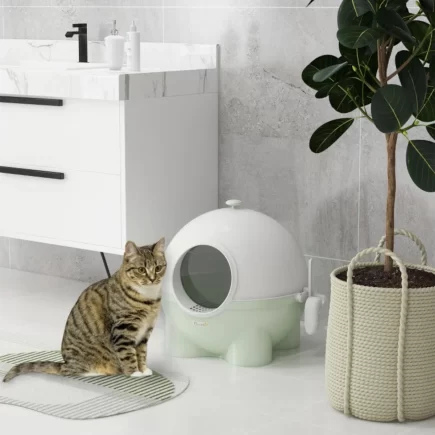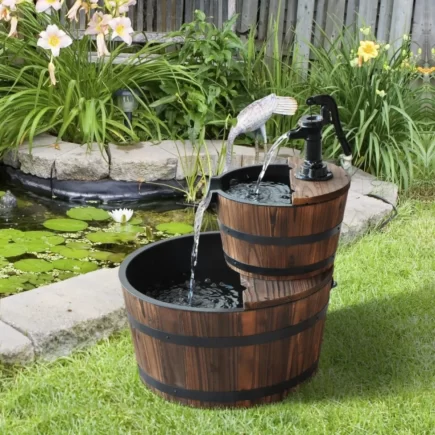Portable washing machines have become a game-changer for those living in apartments, RVs, or smaller spaces where traditional washers simply aren’t an option. These space-saving devices offer a way to handle laundry needs without leaving your home. They save time, money, and space, all while ensuring your clothes get a thorough wash.

In this comprehensive guide, we’ll walk you through the entire process of using a portable washing machine. From setup and loading to washing, rinsing, spinning, and drying, you’ll learn everything you need to know to make the most out of your portable washer. We’ll also cover essential tips, troubleshooting advice, and maintenance practices to help you get the most from your investment.
Preparing the Laundry
Before you even plug in your portable washing machine, there are some key steps to ensure the washing process goes smoothly.
Sorting Clothes by Fabric Type and Color
Start by sorting your laundry to avoid damage to delicate fabrics and to ensure an even wash:
- Light vs Dark Colors: Always separate dark clothes (like jeans) from lighter items to prevent color bleeding.
- Fabric Types: Separate heavy fabrics like towels from lighter clothes like t-shirts to ensure proper agitation and washing.
- Delicates: Place delicate items such as lingerie, silk, or wool in a mesh laundry bag to protect them from rougher washing and spinning.

Setting Up the Machine
Once you’ve prepared your laundry, it’s time to get your portable washer ready for use.
Positioning the Washer
- Flat Surface: Place your portable washing machine on a stable, flat surface. This ensures it remains level during the wash and spin cycles and reduces the chances of shaking or moving.
- Close to a Water Source: Ensure your washing machine is near a faucet to easily connect the inlet hose for water supply.
- Drainage Area: The drain hose should be positioned in a sink, bathtub, or a suitable bucket to allow the dirty water to flow freely.
Connecting the Water Inlet and Drain Hoses
- Water Inlet Hose: Connect the hose to a faucet (kitchen, bathroom, or utility) using the included faucet adapter.
- Drain Hose: Position the drain hose in a sink, bathtub, or bucket to handle the wastewater. The drain hose should be securely placed so it doesn’t slip out during the cycle.
Setting up your portable washing machine correctly is essential for optimal performance.
Plugging In the Machine
Ensure the machine is connected securely to an electrical outlet, making sure that the voltage and power rating are compatible with the machine’s specifications. Always ensure the power is off while connecting.
Loading the Washer
Portable washing machines typically have smaller capacities than full-sized machines. Overloading the washer can lead to ineffective cleaning, unbalanced loads, and motor strain. Here’s a guide to loading your portable washer:

- Small Loads: 4-5 items (e.g., 1-2 shirts, 1-2 pairs of pants).
- Medium Loads: 6-8 items (e.g., 3 shirts, 3 pairs of pants).
- Large Loads: 9-12 items (e.g., 4-6 shirts, 4-6 pairs of pants).
If you’re unsure, it’s better to do multiple small loads rather than overload the machine.
Proper Distribution of Clothes
Load the washer evenly by distributing clothes in a balanced way. Avoid clumping all clothes in one area, as this can cause an unbalanced load during the spin cycle and increase the chances of the machine shaking.
Adding Detergent
Before starting the wash cycle, ensure the clothes are submerged in water. Open the faucet to fill the tub with water and use the appropriate amount of detergent. The amount of detergent will vary depending on the load size:
- Small Loads: About 1 tablespoon of detergent.
- Medium Loads: About 2 tablespoons.
- Large Loads: Around 3 tablespoons.

Make sure not to overuse detergent, as this can lead to excessive suds, poor rinsing, and residue buildup in the machine.
Choosing the Right Wash Cycle
Portable washers typically come with a variety of wash cycles to handle different types of laundry.
Selecting the Appropriate Cycle
- Heavy-Duty Cycle: For items like towels or heavily soiled clothes.
- Normal Cycle: For regular laundry such as t-shirts, jeans, or everyday clothing.
- Delicate Cycle: For items like lingerie, silk, or wool.
If your portable washing machine allows, adjust the water temperature as follows:
- Cold Water: For delicate fabrics and items that may shrink.
- Warm Water: For regular clothing and to help dissolve detergent.
- Hot Water: For towels and bedding, or heavily soiled items.
Starting the Washing Process
Setting the Wash Cycle Timer
Most portable washers have a timer, typically ranging from 15 to 60 minutes. Set the timer according to the load size and fabric type. While the washer is running, monitor the agitation process to ensure that clothes are moving evenly.

Monitoring the Agitation
Portable washing machines use a simple agitator system, which moves the clothes back and forth. Keep an eye on the agitation to make sure clothes aren’t getting stuck or tangled, as this can impact the wash quality.
Draining the Wash Water
Once the wash cycle finishes, it’s time to drain the dirty water.
- How to Properly Drain: Use the drain hose to direct the water into the sink, tub, or bucket. Make sure the hose is securely placed to avoid spillage.
- Drain Fully: Let all the dirty water drain out before moving on to the rinse cycle. Not draining fully can lead to dirty water mixing with the clean rinse water.
Using the Built-In Dryer Function
Since your portable washing machine has a built-in spin dryer, you don’t need a separate dryer for most loads. After the washing and rinsing cycles are complete, you can use the machine’s drying function to remove excess moisture from your clothes. The built-in dryer works by spinning the clothes at high speed, extracting water efficiently and reducing drying time.
For delicate fabrics, monitor the spin speed and avoid overloading the drum to prevent damage.
Drying Your Clothes
Once the spin dryer cycle is complete, your clothes are ready to air-dry
Air-Drying Clothes
Best Practices is to hang clothes on a drying rack or clothesline. Be sure to space clothes out to allow air circulation for faster drying.
Post-Wash Cleanup
Even with a 2-in-1 machine, cleaning of washing machine essential to keep your washer-dryer in top condition:
Emptying Remaining Water
After using the washing and spin dryer functions, check the drum and hoses for any remaining water and empty it completely to prevent mold or mildew.
Wiping Down the Machine
Use a soft cloth to clean the interior and exterior of the drum. Remove any soap residue, lint, or dirt to keep your machine clean and odor-free.
Allowing the Machine to Dry
Leave the lid or door open to allow air circulation inside the drum. This prevents moisture buildup, ensuring your 2-in-1 machine stays fresh and ready for the next load.
Troubleshooting Common Issues
Solving Common Problems
- Hose Slippage: Ensure that the drain and inlet hoses are securely attached to prevent leaks.
- Water Leakage: Check the hose connections to ensure they’re properly sealed.
- Spin Cycle Not Working: If the spin cycle doesn’t work, check the load balance and ensure the lid is securely closed.
A Portable Washing Machine can be a valuable addition to your home, especially if you live in a small space or have limited access to laundry facilities. By following the simple steps outlined in this guide, you can efficiently wash and dry clothes with minimal effort. Remember, regular maintenance is key to keeping your machine running smoothly for years to come.
FAQs
1. Can I use a portable washing machine without a faucet?
Yes, you can use a portable washing machine without a faucet by using a water pump or a water tank to supply water. Many models also come with an adapter to connect to a standard water container.
2. How can I prevent detergent residue on clothes?
Use liquid detergent in small amounts and run an extra rinse if buildup is noticeable. Powder detergents may clump in small washers.
3. Can I wash heavy items like blankets or comforters in a portable washing machine?
While portable washing machines can handle small to medium blankets, it’s best to avoid overloading. You may need to wash larger items like comforters or heavy blankets in smaller loads or use a larger machine for better results.




























